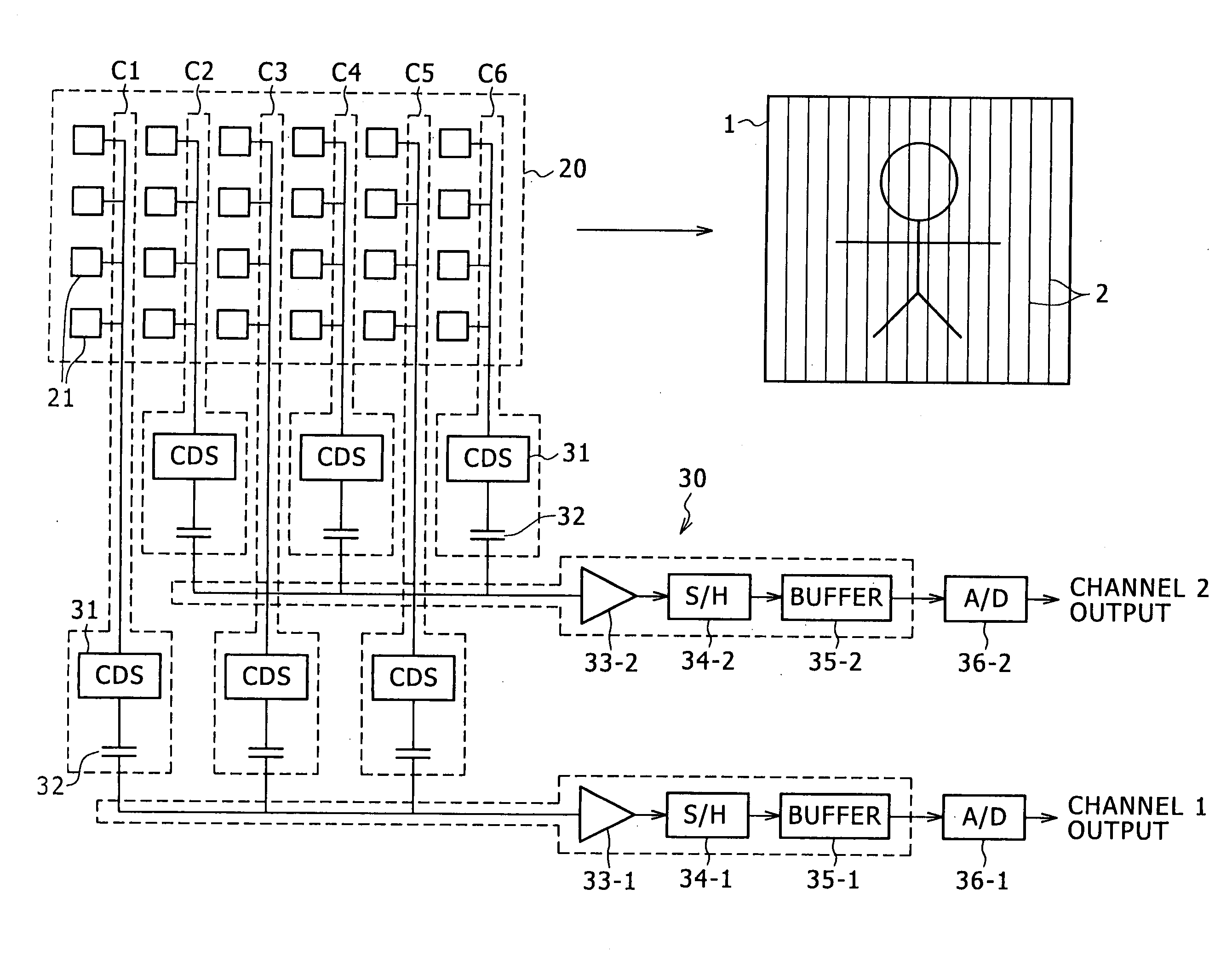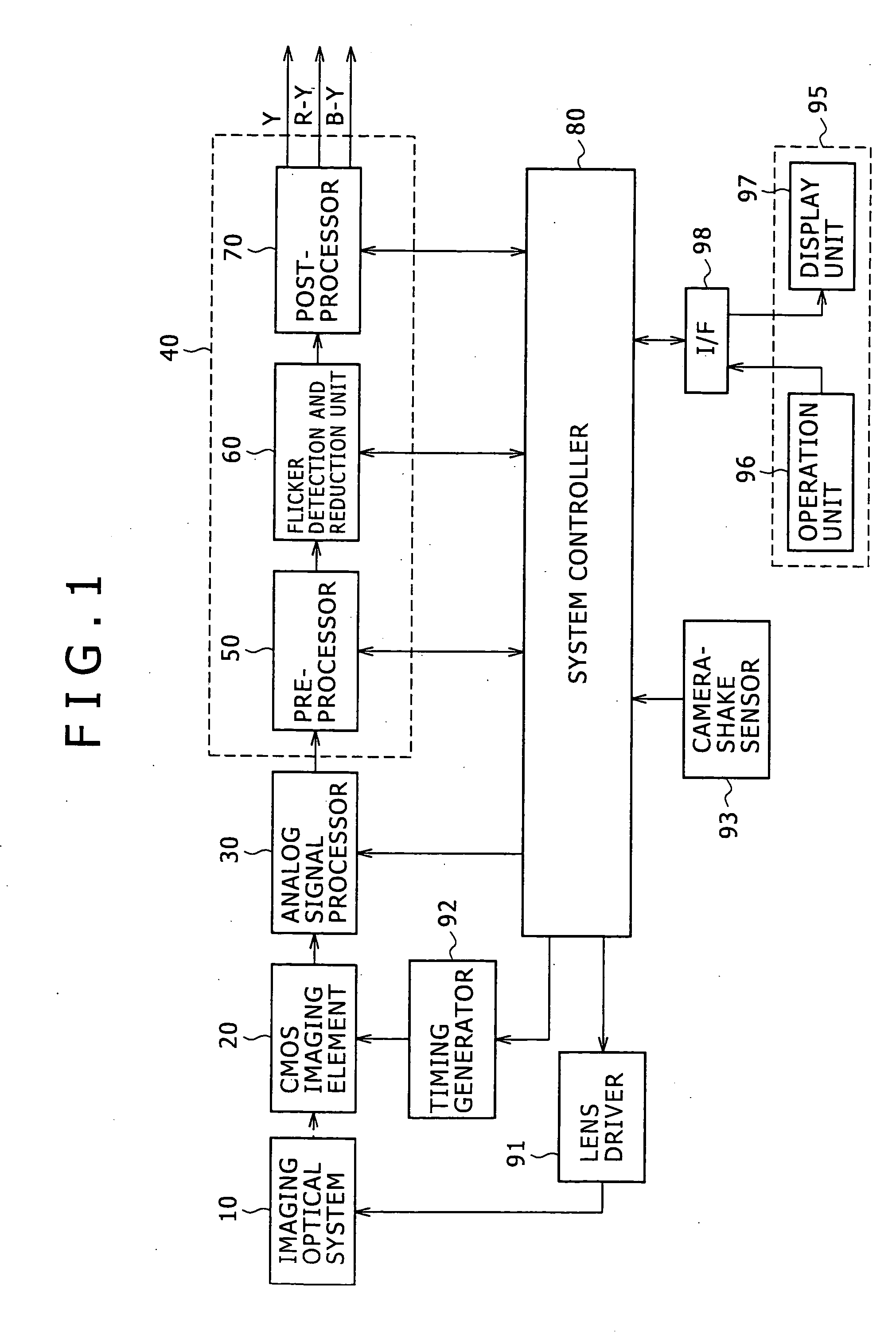Imaging Device and Signal Processing Method
- Summary
- Abstract
- Description
- Claims
- Application Information
AI Technical Summary
Benefits of technology
Problems solved by technology
Method used
Image
Examples
Embodiment Construction
[Embodiment of Imaging Device and Signal Processing Method: FIGS. 1 to 3]
(System Configuration of Imaging Device: FIG. 1)
[0045]FIG. 1 illustrates the system configuration of one example of an imaging device according to the present invention, and shows e.g. an NTSC (vertical synchronous frequency is 60 Hz) or PAL (it is 50 Hz) video camera employing a CMOS imaging element as an XY-address scanning-type imaging element.
[0046]In the imaging device of this example, light from an imaging target enters a CMOS imaging element 20 via an imaging optical system 10, followed by being subjected to photoelectric conversion by the CMOS imaging element 20, so that an analog video signal is obtained from the CMOS imaging element 20.
[0047]The CMOS imaging element 20 is formed by two-dimensionally arranging on a CMOS substrate a plurality of pixels each including a photo diode (photo gate), a transfer gate (shutter transistor), a switching transistor (address transistor), an amplifier transistor, a ...
PUM
 Login to View More
Login to View More Abstract
Description
Claims
Application Information
 Login to View More
Login to View More - R&D
- Intellectual Property
- Life Sciences
- Materials
- Tech Scout
- Unparalleled Data Quality
- Higher Quality Content
- 60% Fewer Hallucinations
Browse by: Latest US Patents, China's latest patents, Technical Efficacy Thesaurus, Application Domain, Technology Topic, Popular Technical Reports.
© 2025 PatSnap. All rights reserved.Legal|Privacy policy|Modern Slavery Act Transparency Statement|Sitemap|About US| Contact US: help@patsnap.com



